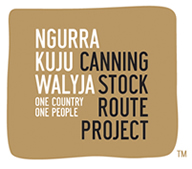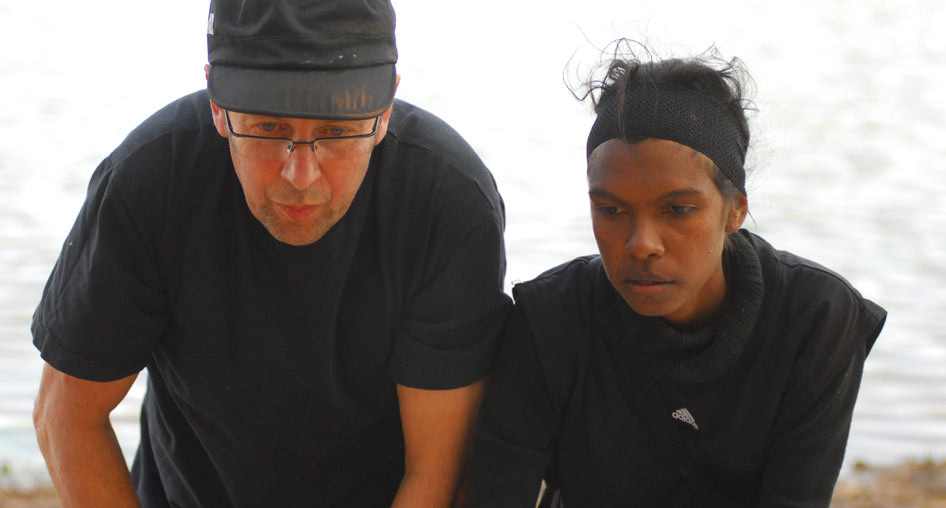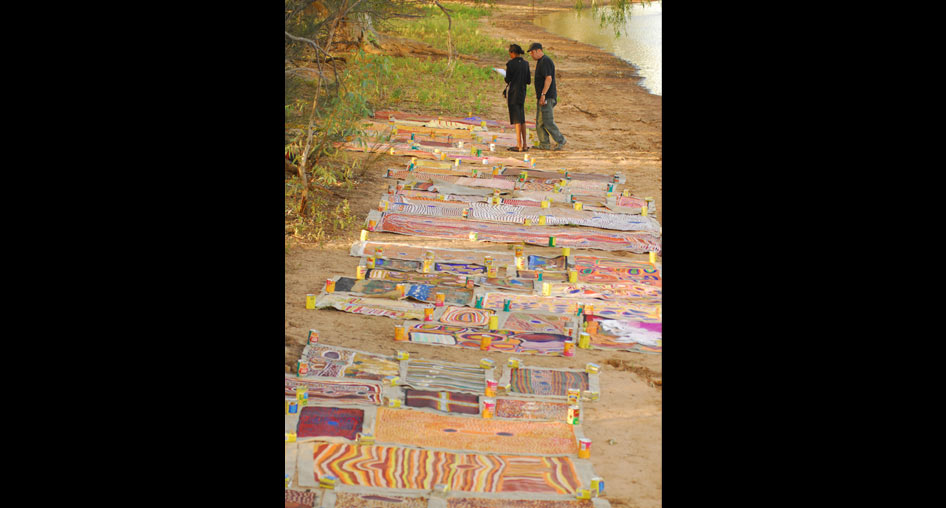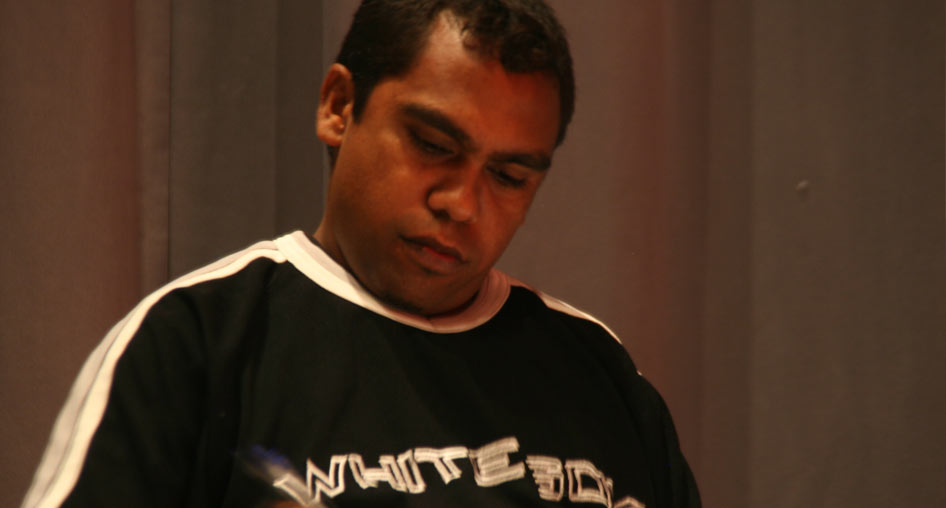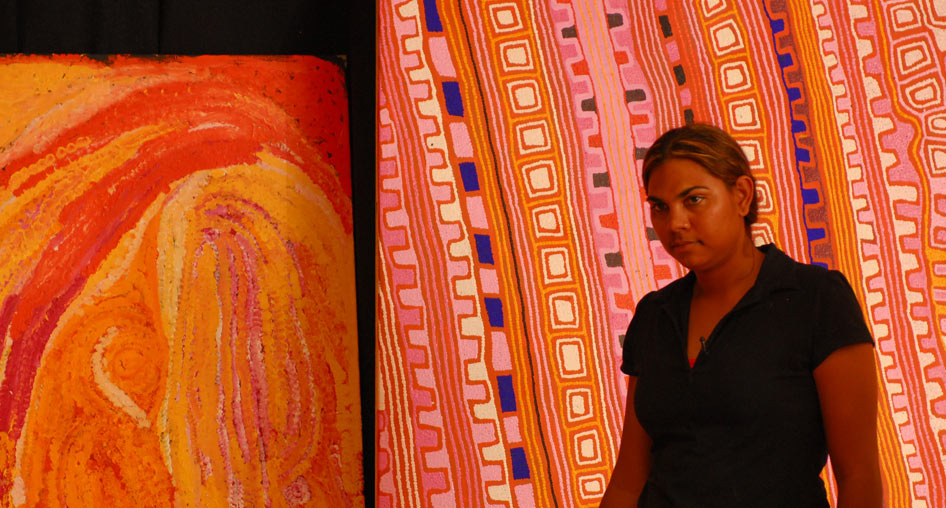Emerging Curators Program
The 2007 return to country trip along the stock route triggered the beginning of the Project’s mentorship programs. Travelling among the various groups of people were artist Murungkurr Terry Murray, a Walmajarri, Wangkajunga and Juwaliny man, whose homeland is Japingka in the northern reaches of the Great Sandy Desert region; Mirruwong arts worker Doolmarria Louise Mengil from the Kununurra area; and Martu woman Hayley Atkins. Their rapport with the older artists, their cultural knowledge and their eagerness to be involved in gathering stories and helping with painting became a vital part of the trip’s success.
During a series of meetings and trips these three aspiring curators were mentored by industry expert, author and former senior curator of Aboriginal and Torres Strait Islander Art at the National Gallery of Australia, Wally Caruana.
On Caruana’s mentorship, Louise Mengil commented:
He taught us to be able to see beyond the painting itself, listen to the artist and its story and then recognise the place and then put it into the painting … so not just seeing the painting but going beyond the painting itself… I liked it when he actually tested us – it showed that, you know, we were listening or, you know, if we needed more help in a different area, he would do that, and he’d work with us sometimes one-on-one. It was great.
Louise Mengil, 2009
Beyond the mentorship of Caruana, Terry, Louise and Hayley were guided through the final and critial stages of curating by co-curators John Carty, Carly Davenport and Monique La Fontatine to bring the collection and the Yiwarra Kuju: The Canning Stock Route exhibition to fruition.
-
MENTOR:
Wally Caruana‘There are talented budding curators in Aboriginal communities, and given the important part art plays in Indigenous society, especially these days on the cultural, social and economic levels, I believe there is a significant role for local curators in the future success of Indigenous art in terms of how it is presented to the world.’
2008 -
EMERGING CURATOR:
Doolmarria Louise MengilThey’re all beautiful stories, all beautiful paintings, but for this show to be able to attract so many viewers and make its point across Australia, we need to be able to pick the strongest paintings and the appropriate paintings, and artists as well, in order for us to tell the story and get the message across the world.’
2009 -
EMERGING CURATOR:
Hayley AtkinsOld people know everything. They know the bush life. They got this knowledge. They know the Dreaming and boundaries, everything. They lived that life… So it’s good for people, whitefellas and young people like us, to know the connection and everything, to know that we all just connected no matter what different language we speak, but we just one family.’
2009 -
EMERGING CURATOR:
Murungkurr Terry MurrayBefore Canning made those lines of wells, it was all family groups — tribes and language groups that were related … Nowadays we are living [in different places], everybody moved, separated to different parts of the Western Desert, to different towns: Fitzroy Crossing, Newman, Jigalong, Balgo, Broome, Bidyadanga. And that connection is still alive today in the heart of the desert … We all one mob. All one people. Canning Stock Route is another history. It’s the European version. But now what we’re talking about is how … daily lives were all connected back through song and dance and Dreaming and the desert.’
2009
